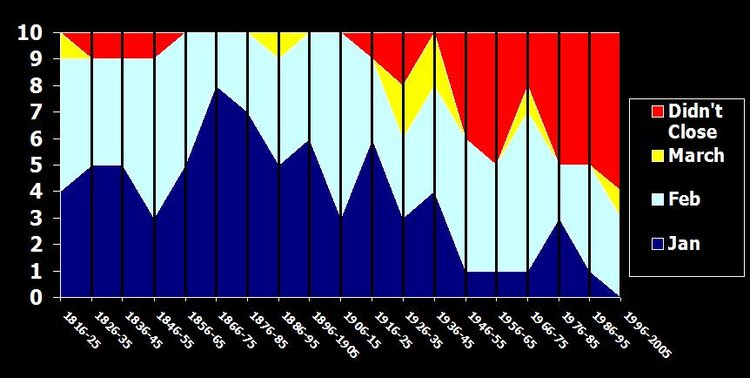Graph of the Day: Freeze Over of Lake Champlain, 1816-2005
There has been a steady increase in the number of years in a given 10-year period when Lake Champlain failed to freeze over. A warming climate can bring about physical, chemical, and biological changes in Lake Champlain. While some of the physical and chemical changes are fairly straightforward, others are speculative. Potential biological changes are even more difficult to predict. Physical changes mostly involve the temperature of the lake. Higher winter temperatures lead to a reduction in winter ice cover. You may have noticed that such reductions have already begun. Prior to the 1950s it was highly unusual for Lake Champlain not to freeze in a given year, but recently an absence of ice cover has become a fairly regular event. Higher temperatures mean the lake will stratify earlier in the spring — setting up a warm layer of water over a colder deeper layer — and will stay stratified longer. A 1979 study stated stratification in the Main Lake typically began in early June; more recently, however, stratification has begun in early- to mid-May. …
Global Warming, Lake Champlain Committee
